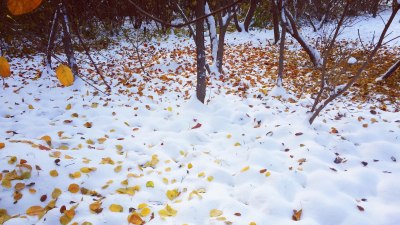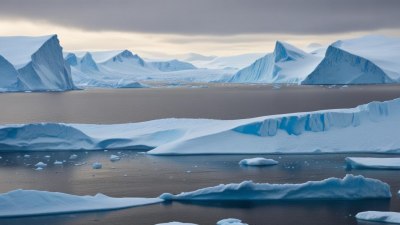What Makes the Air Smell Different During This Seasons
Explore the unique scents of the season and their biological, chemical, and atmospheric causes.

As the seasons change, many of us notice a distinct shift in the air's scent. Whether it's the freshness of spring, the warm earthy notes of autumn, or the crispness of winter, each season brings its own unique aroma influenced by a variety of factors. Understanding what makes the air smell different during various times of the year can enhance our appreciation of nature and our environment. In this article, we will explore the biological, chemical, and atmospheric elements that contribute to these seasonal aromas.
Biological Influences on Seasonal Smells
One of the primary contributors to the changing smells of the air is the biological activity occurring in our surroundings. Plants and trees release various volatile organic compounds (VOCs) as they grow, bloom, decay, or go dormant. For instance, in spring, the air may be filled with the sweet, floral scents of blooming flowers and trees. This is largely due to the release of terpenes, a class of VOCs produced by many plants. The scents of lilacs, cherry blossoms, and tulips can evoke feelings of happiness and rejuvenation, characteristic of this season.
In contrast, during autumn, as leaves change color and begin to fall, the decomposition process kicks in. The breakdown of organic matter in the fallen leaves releases different VOCs, often described as earthy or musty. This is due to the activity of fungi and bacteria breaking down the leaf litter, contributing to the 'smell of autumn.'
The Role of Temperature and Humidity
Temperature and humidity are also crucial factors that influence how we perceive scents in the air. Warmer temperatures can increase the volatility of certain compounds, making them more potent and noticeable. This is especially evident during the summer months when flowers bloom and plants are at their peak growth, filling the air with rich scents. On the other hand, cooler temperatures in winter can inhibit the release of these volatile compounds, often resulting in a more subdued aroma in the air.
Humidity plays a critical role as well. High humidity levels can enhance the perception of certain smells by allowing scent molecules to diffuse more effectively through the air. This is one reason why rainy days often have a distinct smell, often described as 'petrichor,' which is a pleasant scent that arises when rain hits dry soil. The bacteria in the soil produce a compound called geosmin, which smells earthy and is released into the air when the rain falls.
Atmospheric Changes and Their Impact
Seasonal changes in atmospheric pressure and weather patterns can also affect the smell of the air. For example, after a storm, the air can feel 'cleaner' and fresher. This is due to the fact that rain can wash away particulate matter, pollutants, and allergens from the atmosphere, resulting in a clearer, crisper smell. Additionally, the atmospheric pressure influences how scents travel through the air. Lower pressure often allows scents to disperse more freely, making them more noticeable. Conversely, high-pressure systems can trap air and scents near the ground, sometimes leading to stronger odors.
The Impact of Local Flora and Fauna
The specific local flora and fauna in your area also significantly impact the scents that define a particular season. In rural or forested areas, the smell of pine trees may dominate the air in winter, while the scent of blooming wildflowers fills it in spring. In urban areas, human activity may introduce additional smells, such as those from barbecues, flowers in gardens, or exhaust gases from vehicles.
Moreover, the presence of animals can also contribute to seasonal smells. During certain times of the year, such as mating season, pheromones produced by wildlife can add to the olfactory landscape of an area. For instance, the pungent scent of musk from certain animals can become more pronounced during mating seasons.
Understanding Cultural Associations with Smells
Cultural associations tied to certain smells can also play a role in our sensory experiences. Every culture has its own traditional scents associated with seasons, events, or holidays. For example, the warm, spicy scents of cinnamon and nutmeg evoke feelings of comfort and coziness during autumn and winter. In contrast, the fresh, zesty scents of citrus may remind us of summer and cheerful days. These cultural perceptions can shape our overall experience of the season, influencing not only how we perceive smells, but also how we feel about them.
Changes in Land Use and Urban Development
Modern changes in land use and urban development have also impacted how the air smells across different seasons. Deforestation and urbanization can reduce the amount of greenery, thus diminishing the natural odors that we associate with certain seasons. For example, as cities expand, the smell of blooming flowers may become less prominent compared to industrial or vehicle emissions, leading to a less fragrant seasonal experience.
Education and Awareness
Being aware of the seasonal smells around us can encourage us to connect with nature more deeply. Consider engaging in outdoor activities that allow you to fully experience the aroma of each season. Whether it's gardening, hiking, or visiting local farmers' markets, these opportunities provide a chance to immerse yourself in the distinct fragrances of different times of the year. Take note of how the air smells in different environments, as it can vary significantly based on location and weather conditions.
Ultimately, the changing scents of the air throughout the seasons serve as a reminder of the dynamic nature of our environment. Understanding the biological, chemical, and atmospheric factors at play can not only enhance our appreciation of these scents but also our understanding of the delicate balance of ecosystems around us. Embrace the seasonal transitions, and take a moment to pause and inhale the unique aromas that each time of year brings.











